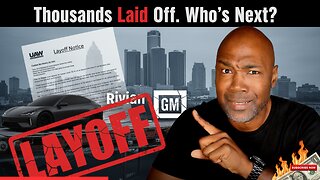Premium Only Content

211: Tools and mental models to get past the ordinary
The connection between writing and design is one of the issues raised in “Lessons on Branding from the World’s Most Iconic Cold,” distributed last night by Bo Sacks. The cold in this case was one in Frank Sinatra’s nose.
I can’t draw worth a darn, and I’m not much of a designer. I think this is because I can’t call up images in my mind as well as other people can. For example, I know what a horse looks like, but when I try to call up an image of a horse, it’s rather fuzzy. There aren’t a lot of details.
But then I learned a trick. You can draw a series of circles in different places and then connect them in a way that makes a half-decent image of a horse.
Somebody had to come up with that trick by thinking of a horse from a completely different point of view – that is, by thinking of a horse as a series of connected circles, which is not at all an obvious way to think of a horse.
Today I want to talk about a few tricks for looking at things from a different point of view.
First principle thinking is where you remove everything that isn’t a first principle. Eliminate bias, assumptions, conjecture, and strip it down to what is unquestionably true. Then build from there.
It can be a challenging exercise. For example, if you were to try to apply it to a question like “how can we increase the renewal rate for our magazine?” you would start by stripping away everything you currently do and everything you assume about your subscribers. You’d start with such first principles as “what causes someone to make a decision?” or “what motivates a person to continue a subscription?”
Your assumption might be that people renew because they love your product, but you might have to face the possibility that they renew because they don’t pay close attention to their credit card bills.
Another mental framework that can help here is to think about things in the limit. How short or long can an article, podcast, or video be? How small or large can a magazine be? What’s the smallest possible market size that could support a successful business?
You’re not going to do those things. You’re not going to make a teeny tiny magazine. But thinking about it from that perspective can open up new ideas.
You can also imagine the perfect solution without any constraints. Don’t think about how much it would cost, what technology you would need, how many people it would require. Conceptualize the perfect product, then work backwards to find the tools, skills, knowledge and resources required to make that happen.
A buried assumption in all of this is you may be doing things you don’t need to do at all. Before you optimize something, ask if it’s even necessary. For example, before you craft the greatest ever renewal series, ask if you need a renewal series at all.
It’s too easy to fall into the habit of continuing to do what you’ve done in the past without stopping to ask if it’s worth while.
The four principles I just mentioned were taken from an article in Forbes called “How Elon Musk Solves Problems; 4 Key Frameworks.”
I also recommend that you get the “Creative Thinking Cards” from schoolofthought.org. I’ve mentioned them before. I think they’re very interesting and can help in the creative process.
You might be asking, how did I get from an article about design? The article talks about approaching design from unexpected directions. It starts with an emphasis on writing, then talks about the virtue of astute observation to get past superficial details. Then combining the two and writing about some detail – like Frank Sinatra’s clothes – and contrasting that with his mood, or the people around him.
All these things are ways to look at a subject from different angles so you can tell a better story, or create a better product.
Links
How Elon Musk Solves Problems; 4 Key Frameworks
https://www.forbes.com/sites/jodiecook/2022/12/01/how-elon-musk-solves-problems-4-key-frameworks/?sh=5bd965d0152d
Creative Thinking Cards Deck
https://thethinkingshop.org/collections/products/products/creative-thinking-cards-deck
Lessons on Branding from the World’s Most Iconic Cold
https://www.printmag.com/strategy-process/lessons-on-branding-from-the-worlds-most-iconic-cold/
-
 9:53
9:53
Rethinking the Dollar
20 hours agoWhen Detroit Bleeds, America Suffer! Layoffs Have Begun
6.12K6 -
 18:36
18:36
Clownfish TV
23 hours agoYouTube Just NERFED YouTube Gaming... | Clownfish TV
2.43K13 -
 10:26
10:26
Silver Dragons
17 hours agoSilver is TAKING OFF Around the World
6.77K3 -
 1:36
1:36
From Zero → Viral with AI
1 day agoAI in Content Creation & Discovery – The New Era of Marketing
5.42K -
 1:20:10
1:20:10
FreshandFit
11 hours agoMiami Halloween Street Debate
204K101 -
 2:06:16
2:06:16
TimcastIRL
15 hours agoTrump Calls For NUCLEAR OPTION, END Filibuster Over Food Stamp Crisis | Timcast IRL
221K179 -
 3:58:54
3:58:54
SavageJayGatsby
12 hours ago🎃 Friend Friday – Halloween Edition! 👻🕷️
56.1K4 -
 16:16
16:16
Robbi On The Record
12 days ago $22.02 earnedThe Dark History of Halloween | What You Should Know
72.1K70 -
 58:18
58:18
Flyover Conservatives
1 day agoThe Truth About Halloween that You DIDN’T Know - Holiday Special - Historian Bill Federer | FOC SPECIAL Show
67.9K11 -
 3:10:46
3:10:46
Ellie_roe
11 hours agoEllie and Errys Halloween Spooktacular || Random Horror Games
35.1K7